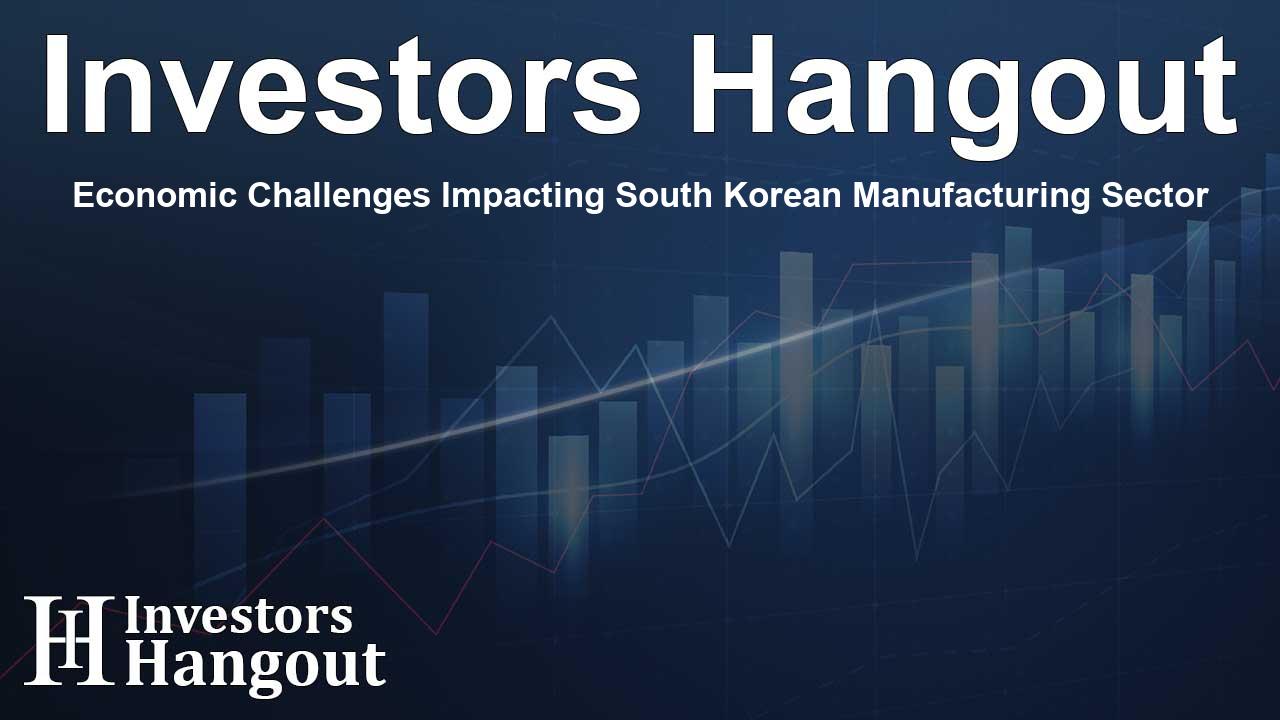Economic Challenges Impacting South Korean Manufacturing Sector

Economic Trends in South Korea's Manufacturing Sector
The recent economic landscape in South Korea reveals a troubling trend in factory activity that has alarmed many manufacturers. As uncertainty weighs heavily on both domestic and international markets, the purchasing managers index (PMI) has dropped significantly, highlighting a contraction in manufacturing outputs.
Understanding the PMI Decline
According to data collected by S&P Global, the PMI for manufacturers in South Korea fell to 49.0 in December, down from 50.6 in November. This drop signifies a shift into contraction territory, indicating that more firms are experiencing declines in production rather than growth. The index has now slipped below the crucial 50-mark for the third time since August, reflecting a deeper worry within the manufacturing sector.
Impact on Production and Orders
Output levels have contracted for four consecutive months. The latest data indicates that the decline in manufacturing output is troubling and is steeper than in previous months. Reduced new orders also piled onto these concerns, revealing an unsettling trend stemming from waning client confidence in the domestic market.
Factors Contributing to Manufacturer Sentiment
Manufacturers are grappling with difficult sentiments moving into the upcoming year. The latest survey reflected a significant drop in sentiment that has now fallen below the 50-threshold, a stark contrast to the optimism previously felt in July 2020. This has led to worries about future economic conditions, something not witnessed since the onset of the COVID-19 pandemic.
Political and Trade Uncertainty
The political landscape in South Korea has been tumultuous, with recent events such as the impeachment of President Yoon Suk Yeol contributing to an unsettled atmosphere. An imposition of martial law and ensuing political uncertainty have further weakened consumer and business confidence alike.
Concerns are compounded by potential shifts in U.S. trade policy, particularly as new leadership has promised significant tariffs on several countries, including South Korea’s major trading partners like China and Mexico. This could have far-reaching implications for South Korean firms operating internationally.
International Demand Dynamics
The survey reflects a complex international demand landscape. Respondents noted that while there has been weakness in demand from major markets like the United States and China, there have been some improvements observed in Europe and parts of the Asia-Pacific region. This mixed bag of international demand continues to add to the trickiness of predicting future manufacturing activity.
As a trade-reliant economy, South Korea has faced challenges in maintaining strong growth figures. Recent reports suggest that the economy barely grew during the third quarter as export growth slowed. Projections indicate that export growth may further decelerate to just 1.5% by 2025, following a robust figure of 6.3% in 2024.
Conclusion: Navigating the Future
As manufacturers grapple with these external pressures, it becomes increasingly crucial for businesses to adapt to rapidly changing economic conditions. The realization that the manufacturing sector is at a crossroads may drive enterprises to pivot in their strategies and operations in hopes of fostering resilience amid uncertainty.
Frequently Asked Questions
What does the PMI index indicate about manufacturing activity?
The PMI index is a key indicator that reflects the economic health of the manufacturing sector. A reading above 50 indicates expansion, while a reading below 50 signifies contraction.
How has political uncertainty affected South Korean manufacturers?
Political uncertainty has led to decreased consumer and business confidence, negatively impacting orders and overall sentiment among manufacturers.
What are the projected growth rates for South Korean exports?
Export growth for South Korea is expected to slow significantly, with projections of just 1.5% growth for 2025, a notable drop from 6.3% in 2024.
How do trade policies impact South Korean manufacturers?
Changing trade policies, especially those from major partners like the U.S., can create challenges such as tariffs that affect the competitiveness of South Korean manufacturers in global markets.
What can manufacturers do to navigate the current challenges?
Manufacturers may need to adopt flexible strategies, focus on innovation, and explore new markets to adapt to ongoing uncertainties in both domestic and international environments.
About Investors Hangout
Investors Hangout is a leading online stock forum for financial discussion and learning, offering a wide range of free tools and resources. It draws in traders of all levels, who exchange market knowledge, investigate trading tactics, and keep an eye on industry developments in real time. Featuring financial articles, stock message boards, quotes, charts, company profiles, and live news updates. Through cooperative learning and a wealth of informational resources, it helps users from novices creating their first portfolios to experts honing their techniques. Join Investors Hangout today: https://investorshangout.com/
Disclaimer: The content of this article is solely for general informational purposes only; it does not represent legal, financial, or investment advice. Investors Hangout does not offer financial advice; the author is not a licensed financial advisor. Consult a qualified advisor before making any financial or investment decisions based on this article. The author's interpretation of publicly available data shapes the opinions presented here; as a result, they should not be taken as advice to purchase, sell, or hold any securities mentioned or any other investments. The author does not guarantee the accuracy, completeness, or timeliness of any material, providing it "as is." Information and market conditions may change; past performance is not indicative of future outcomes. If any of the material offered here is inaccurate, please contact us for corrections.